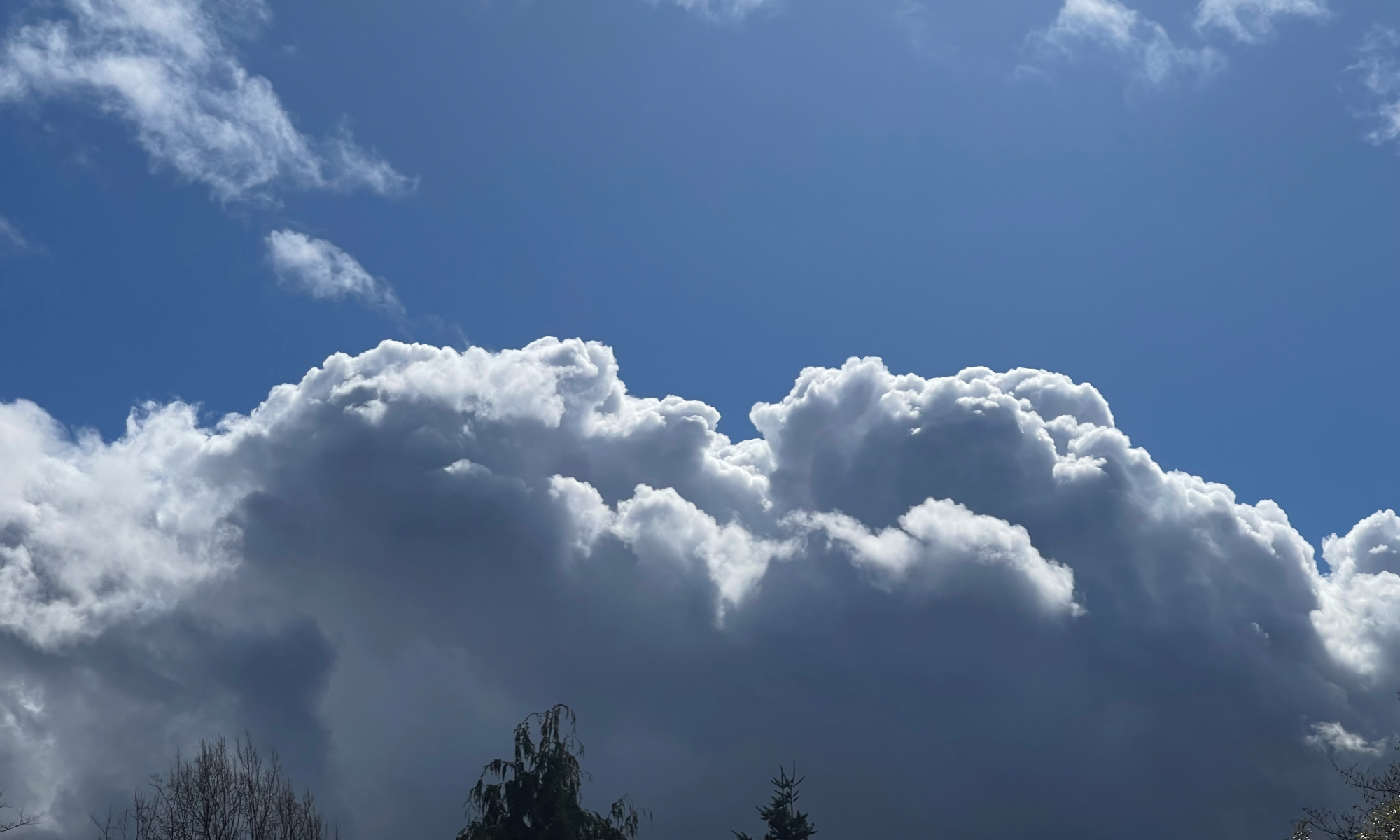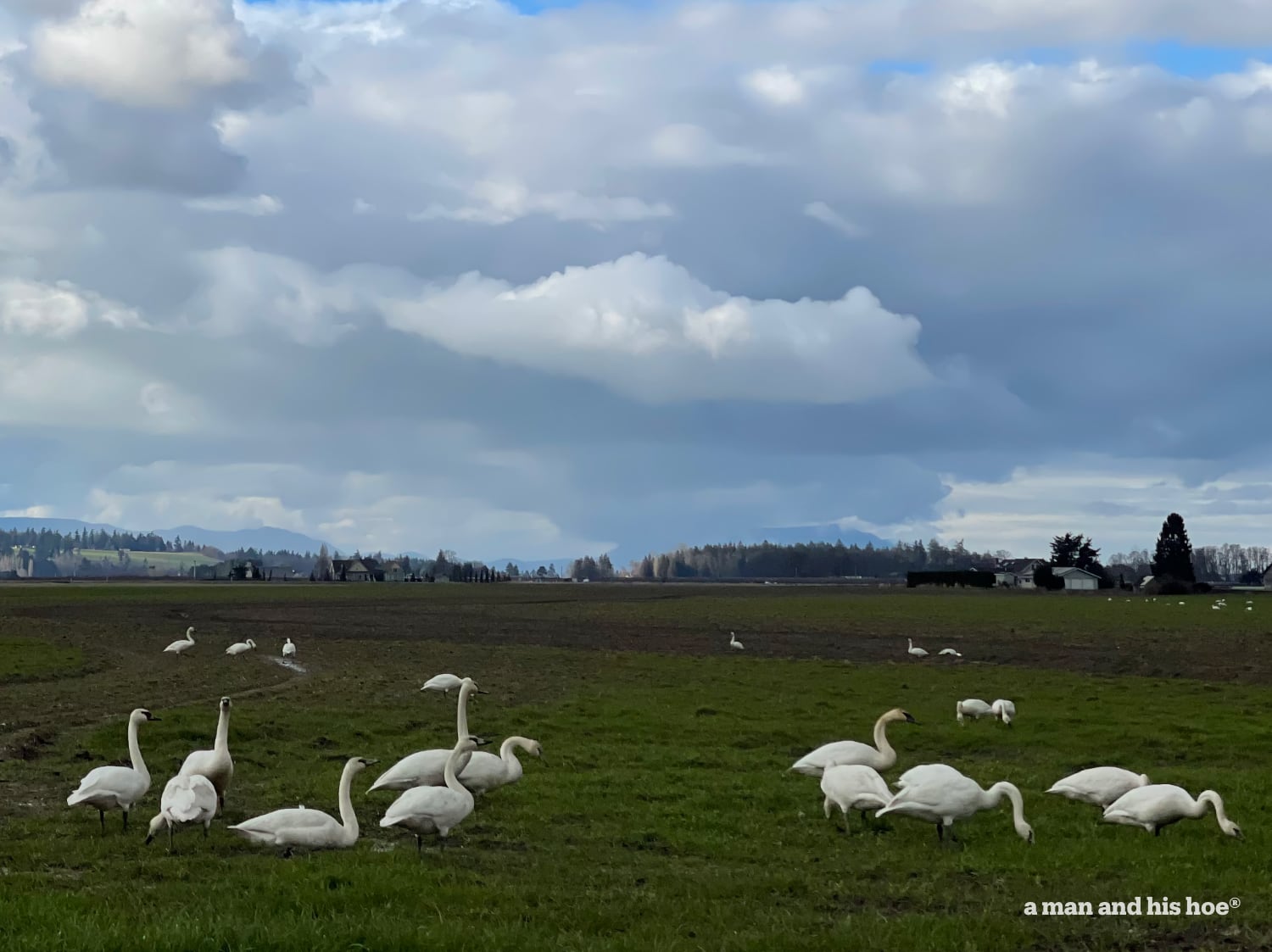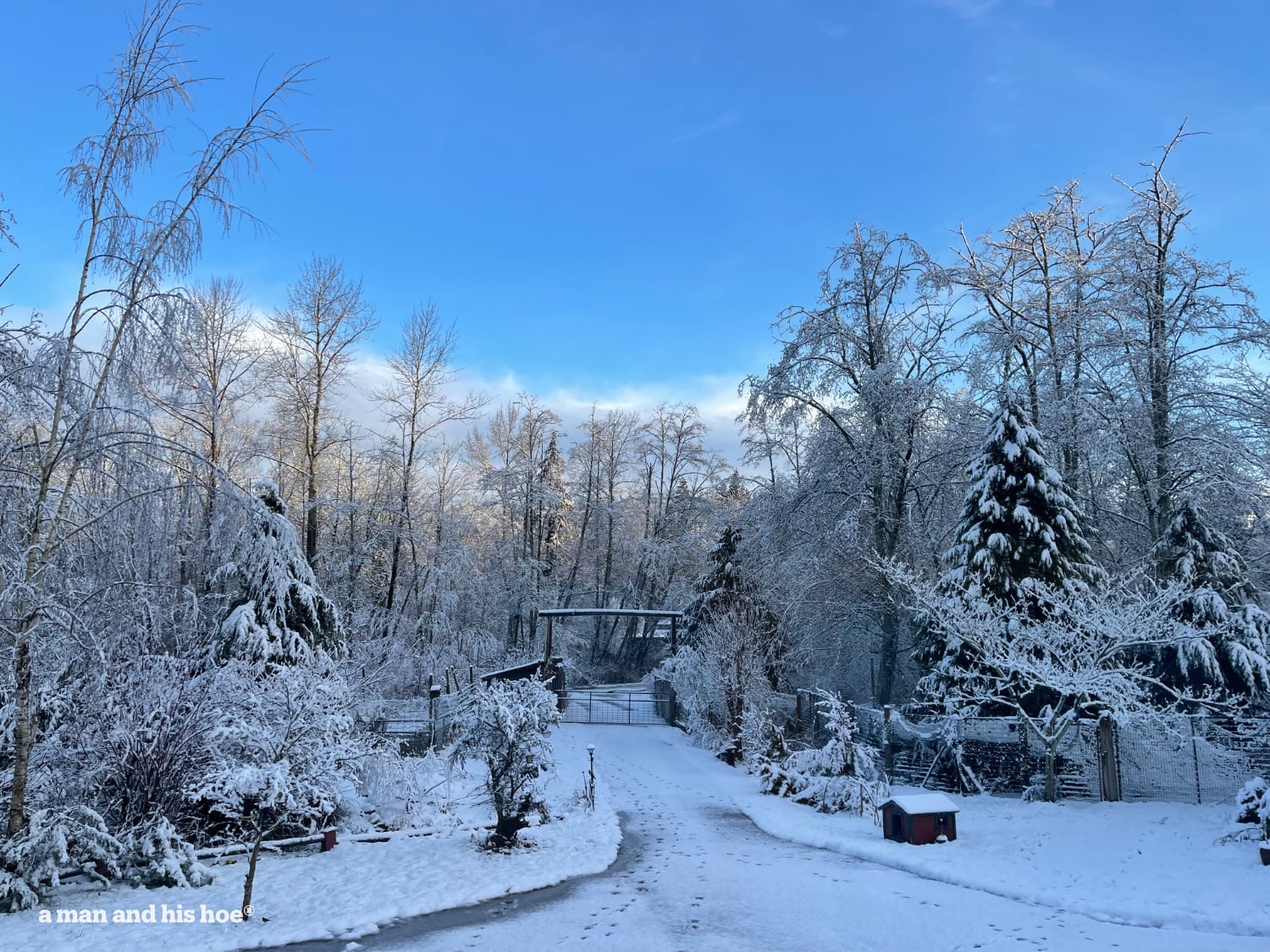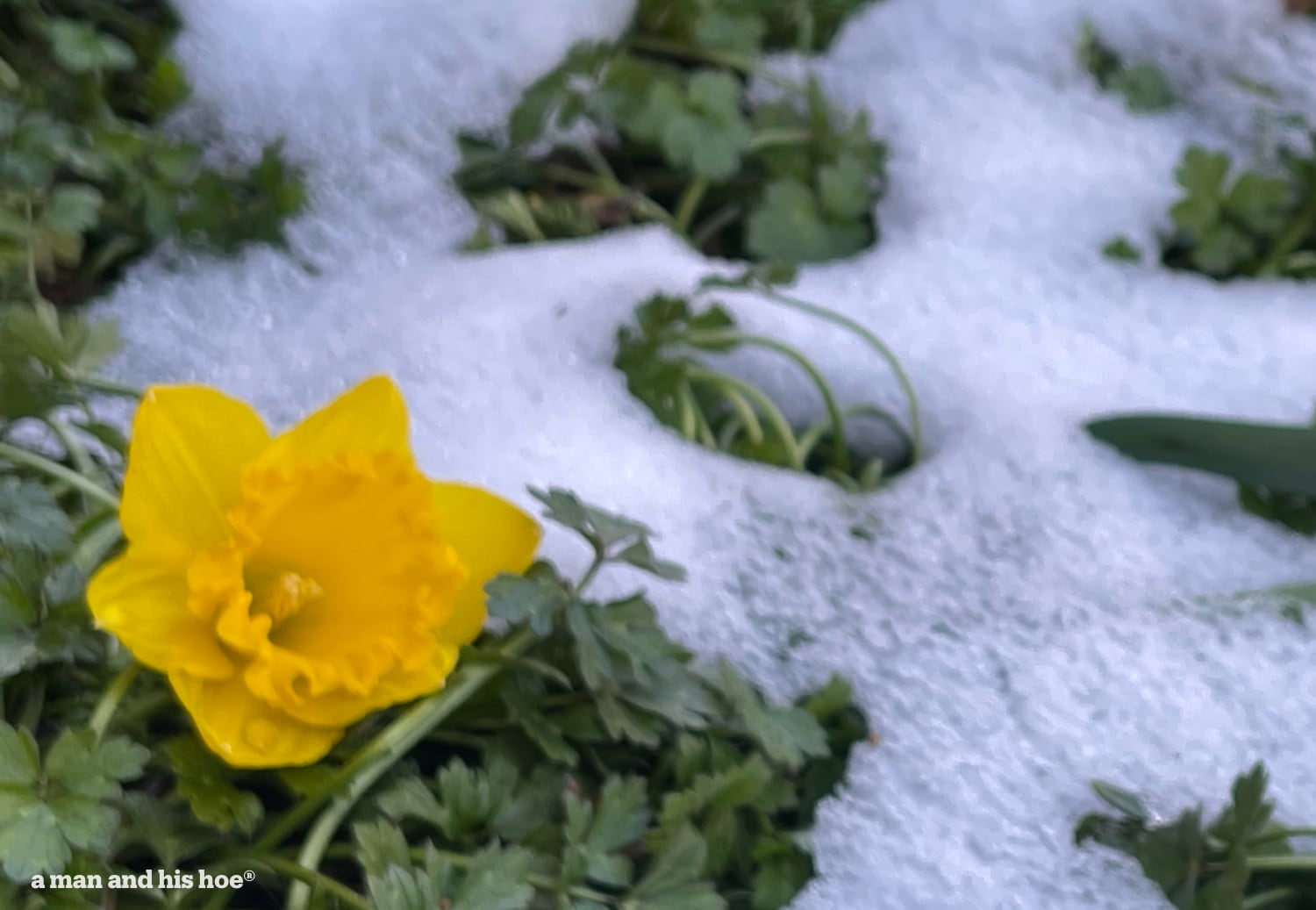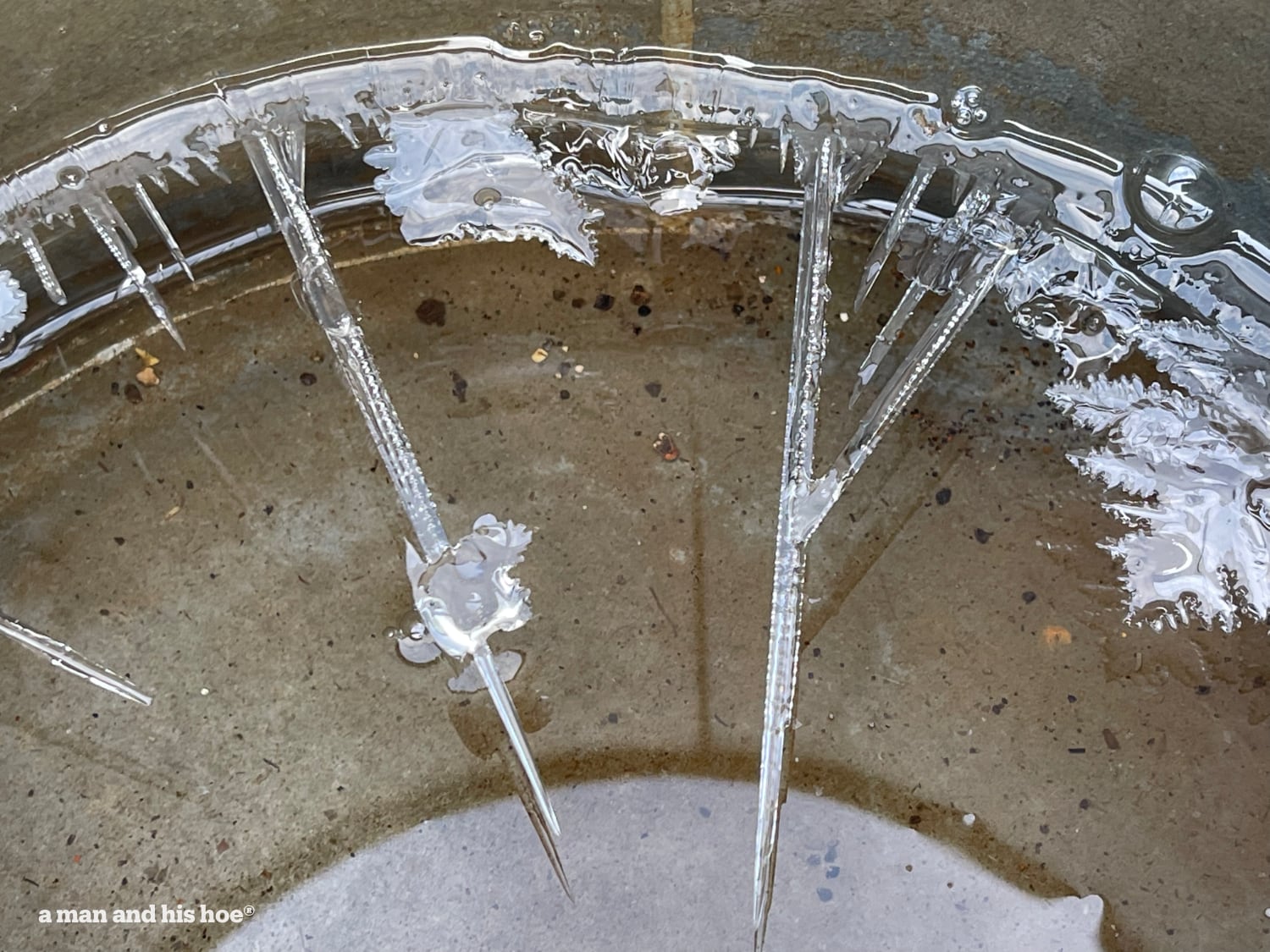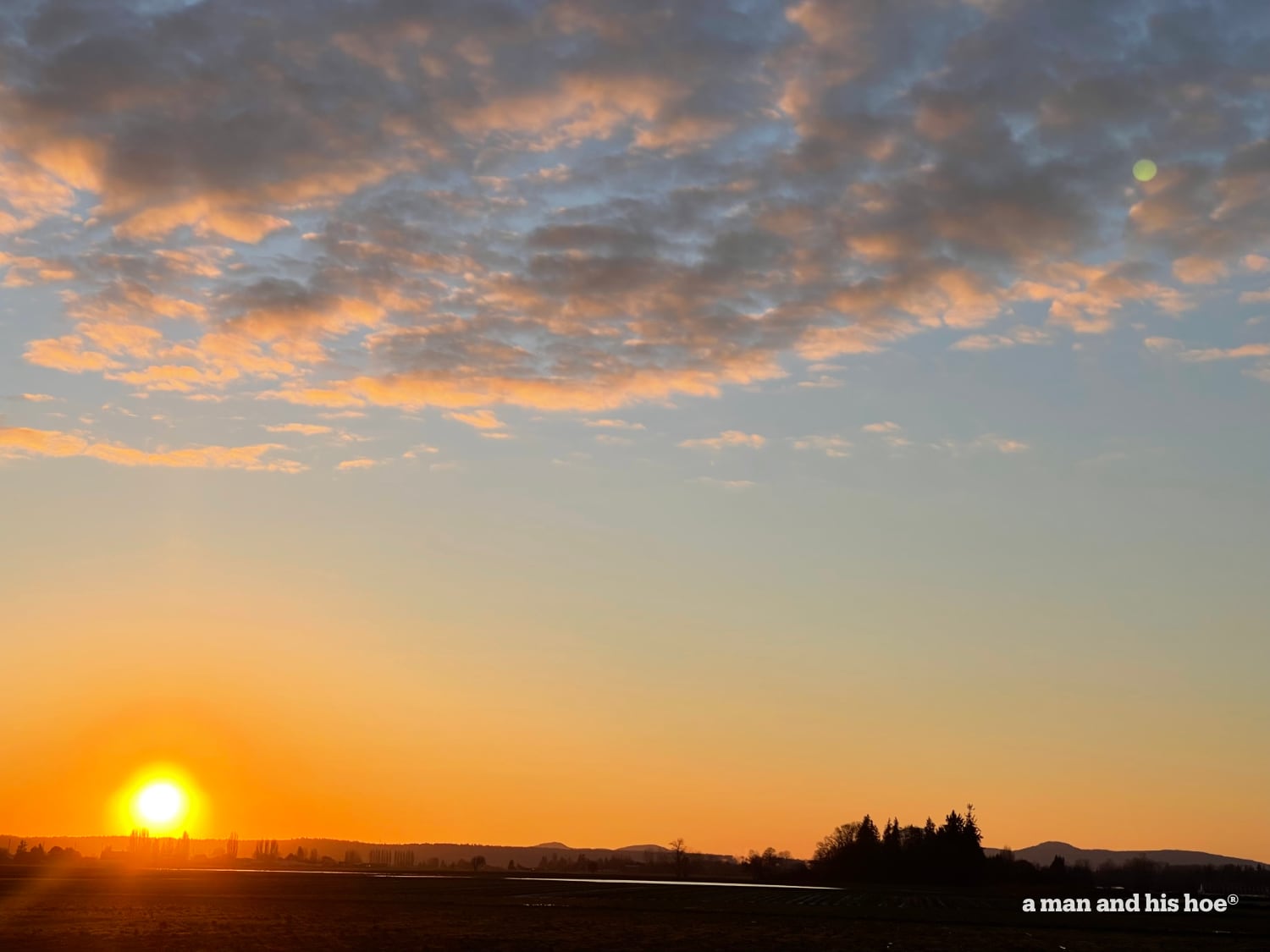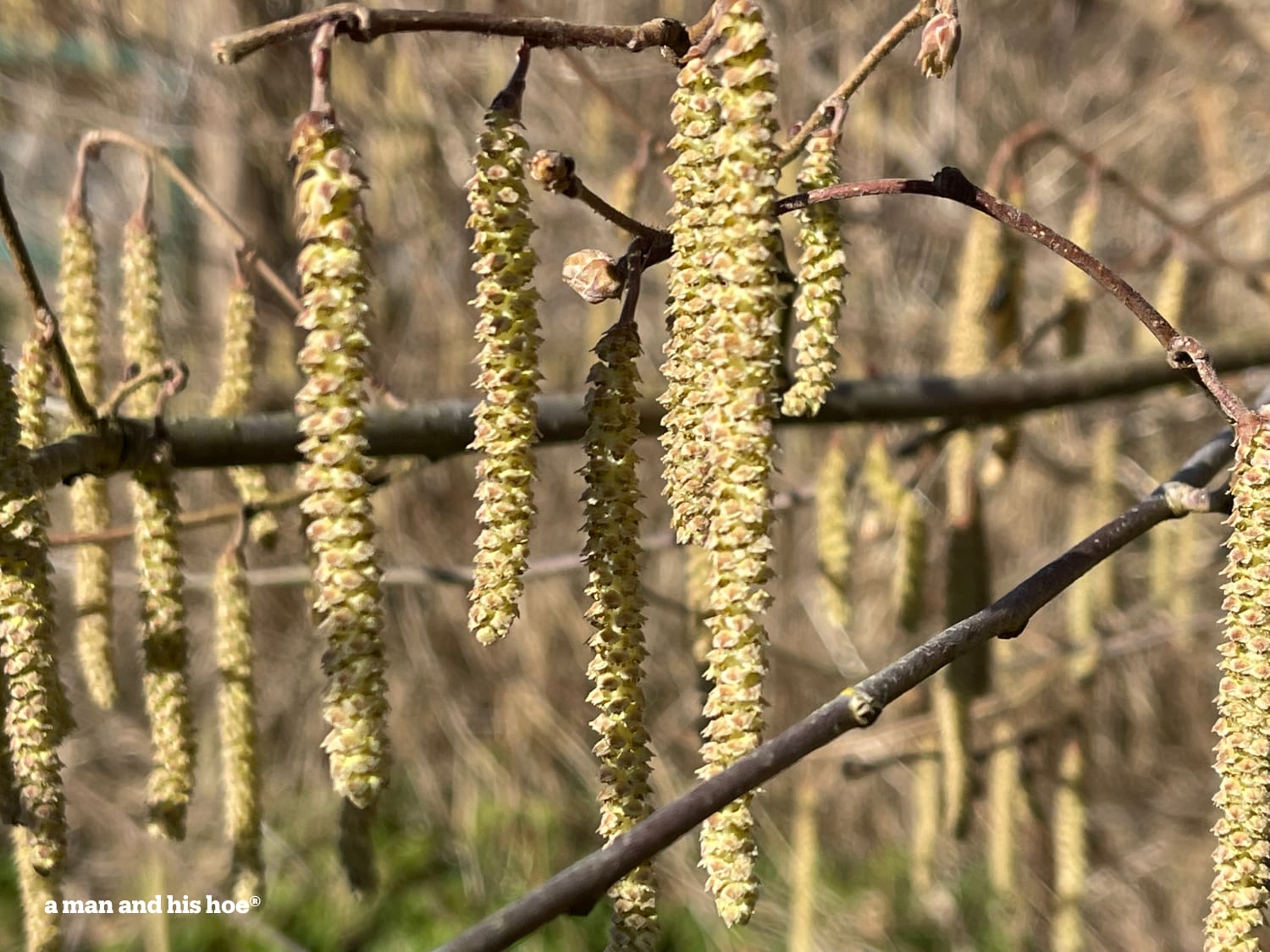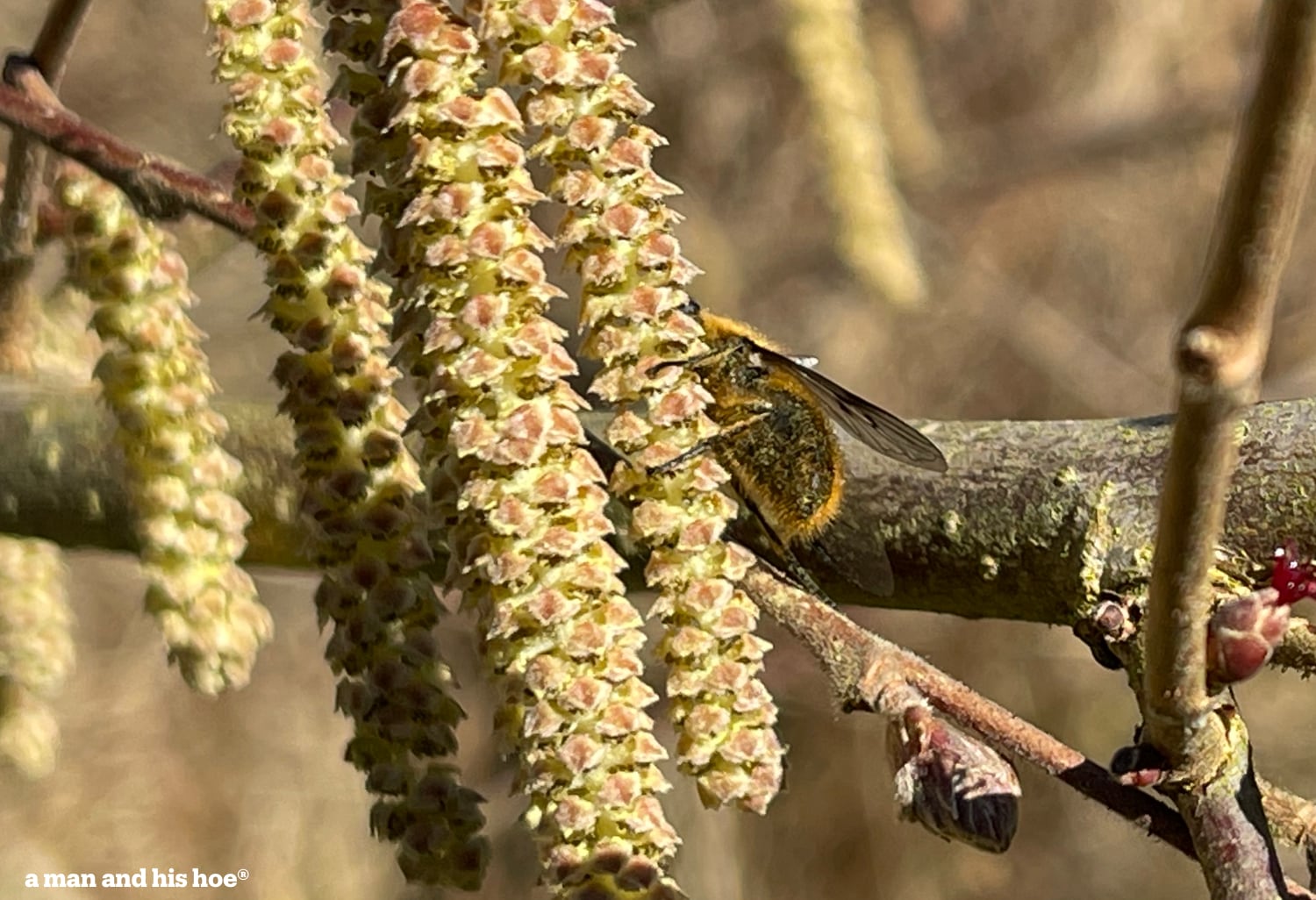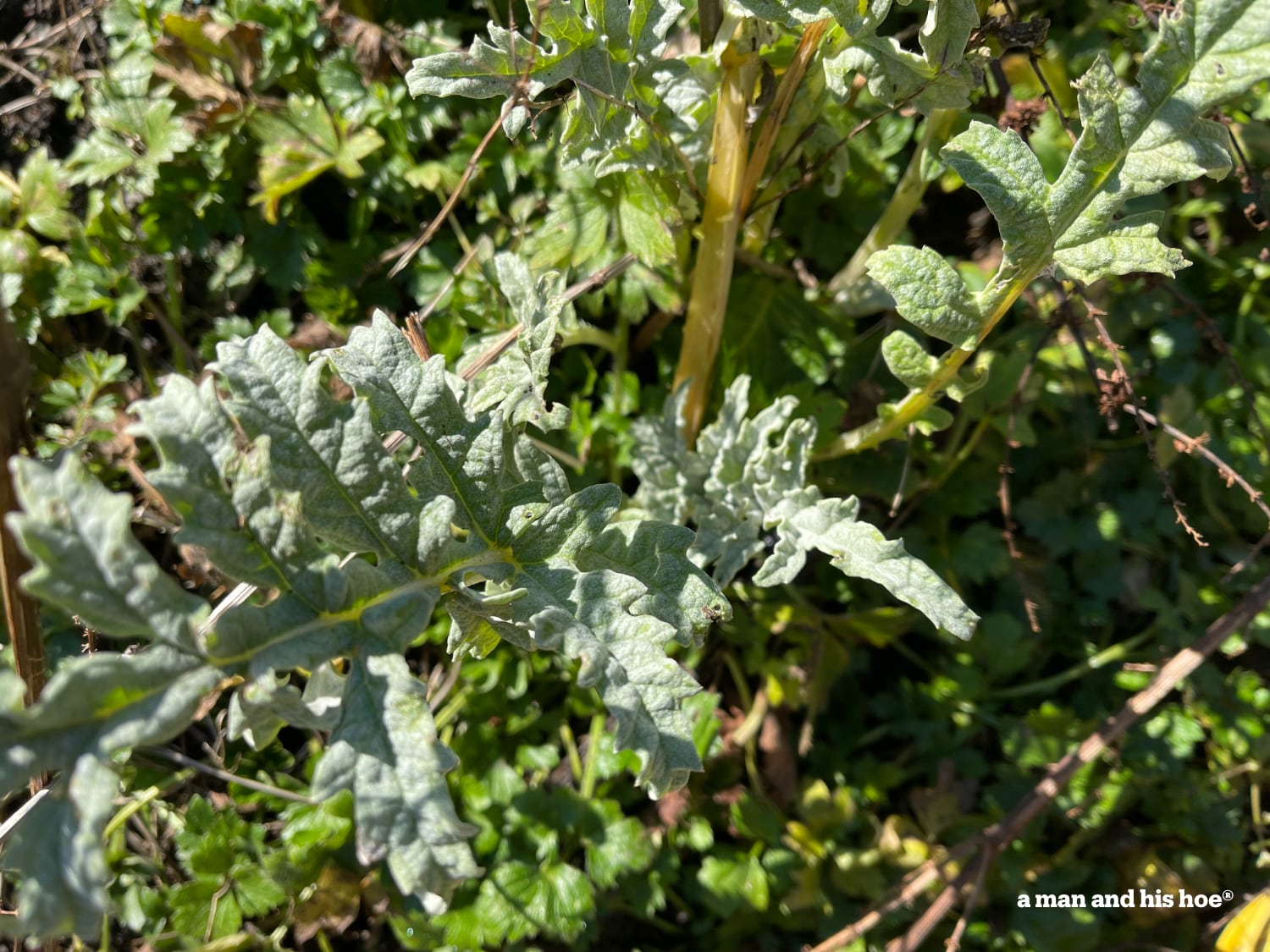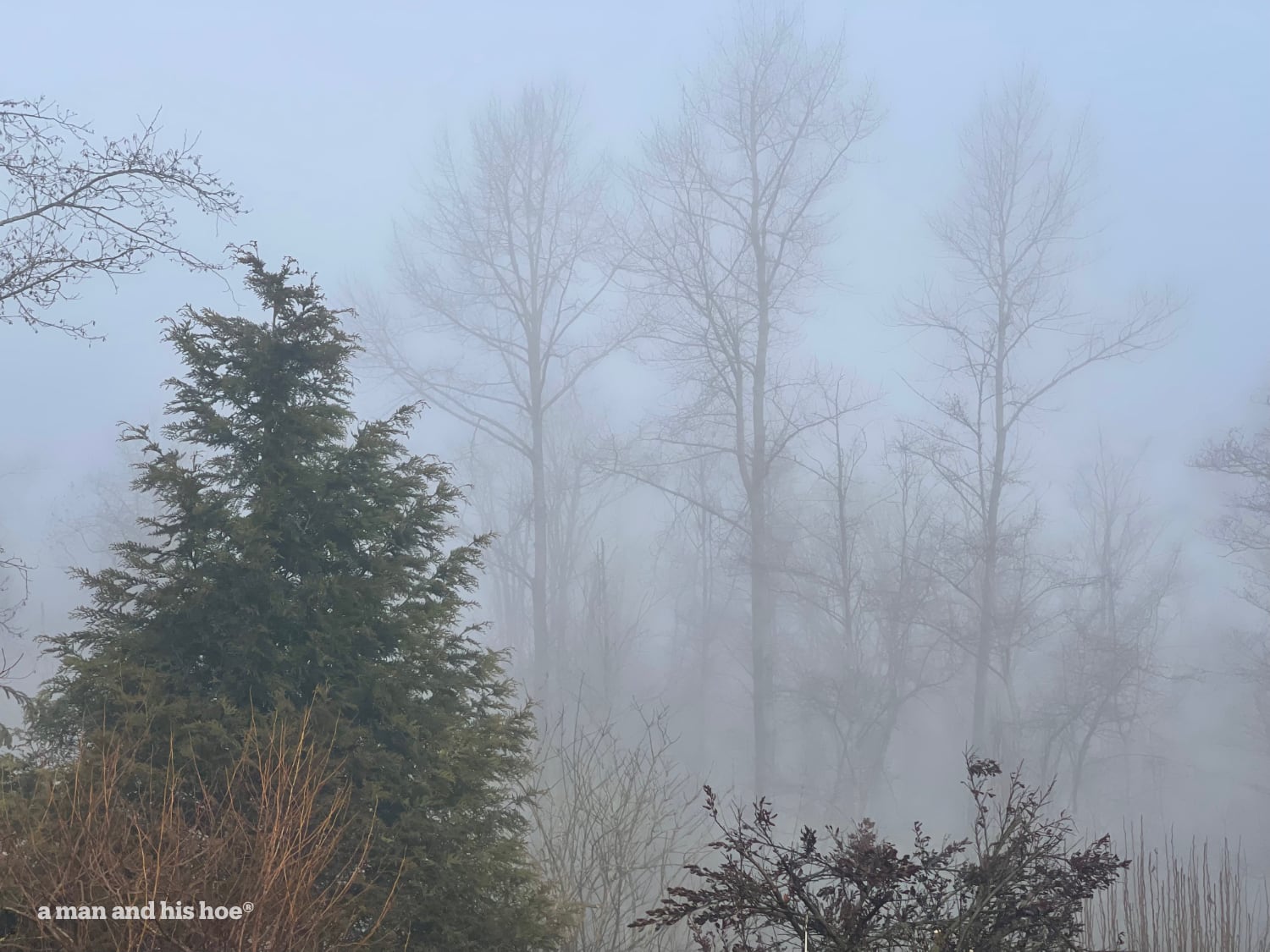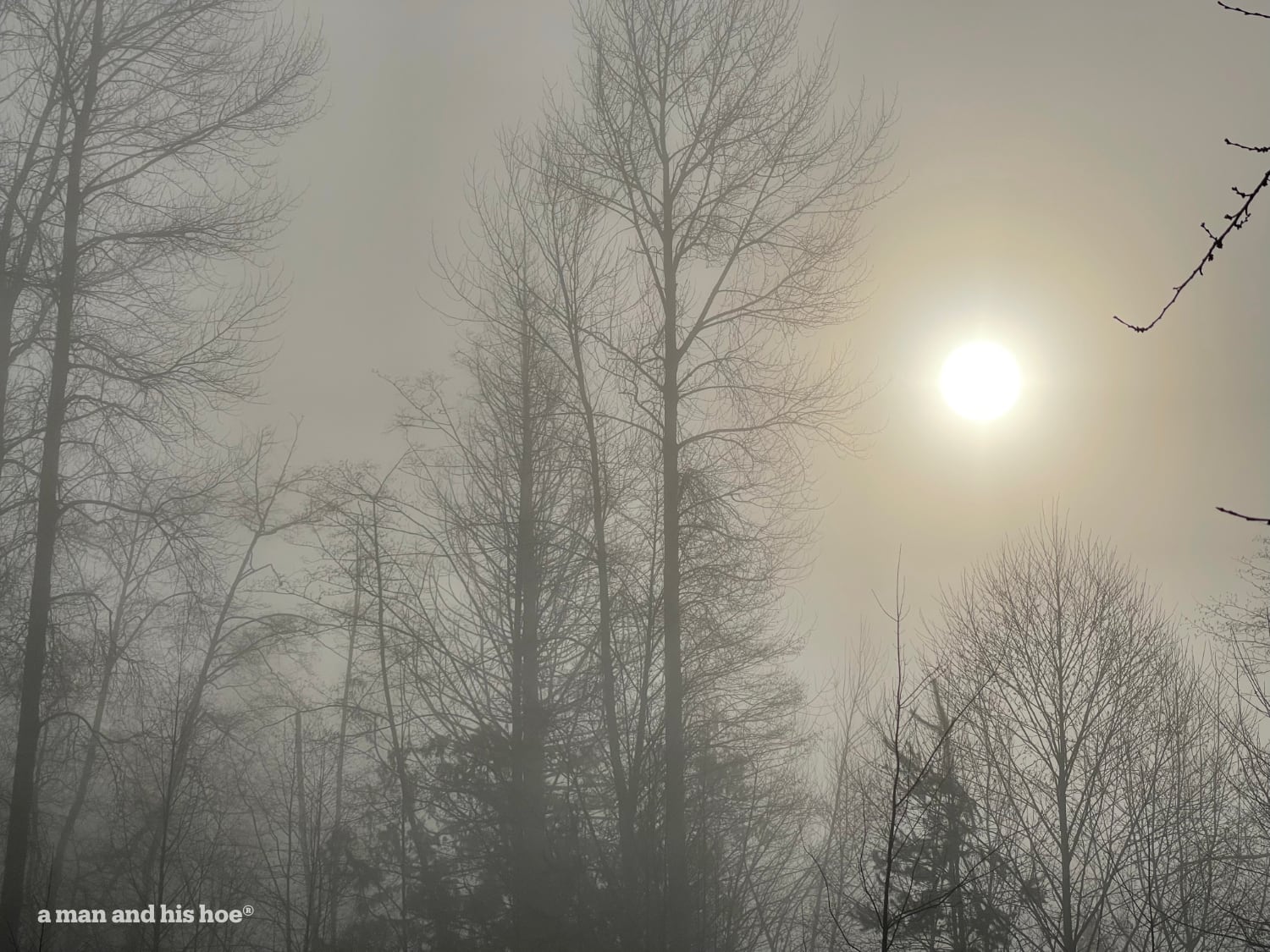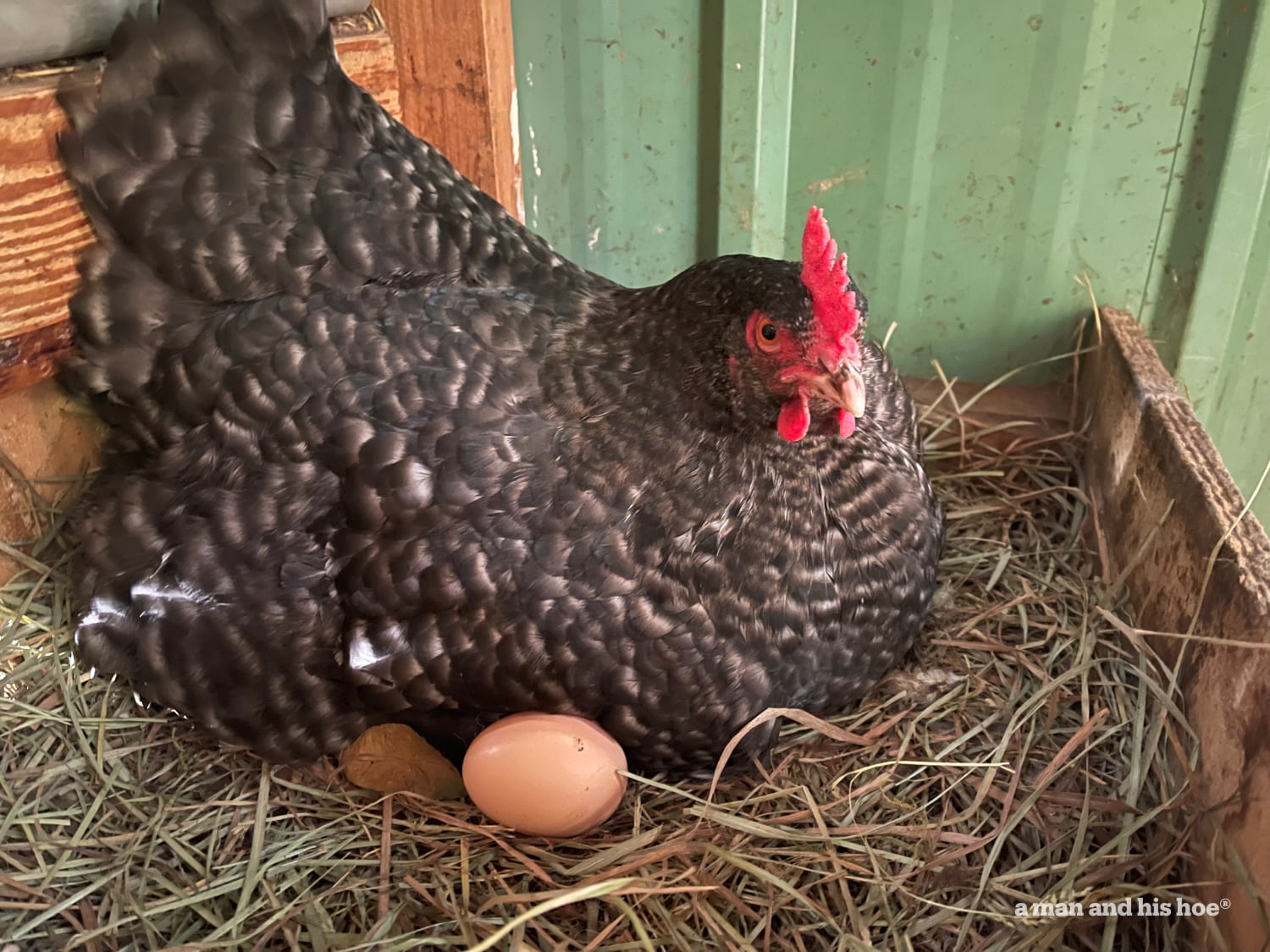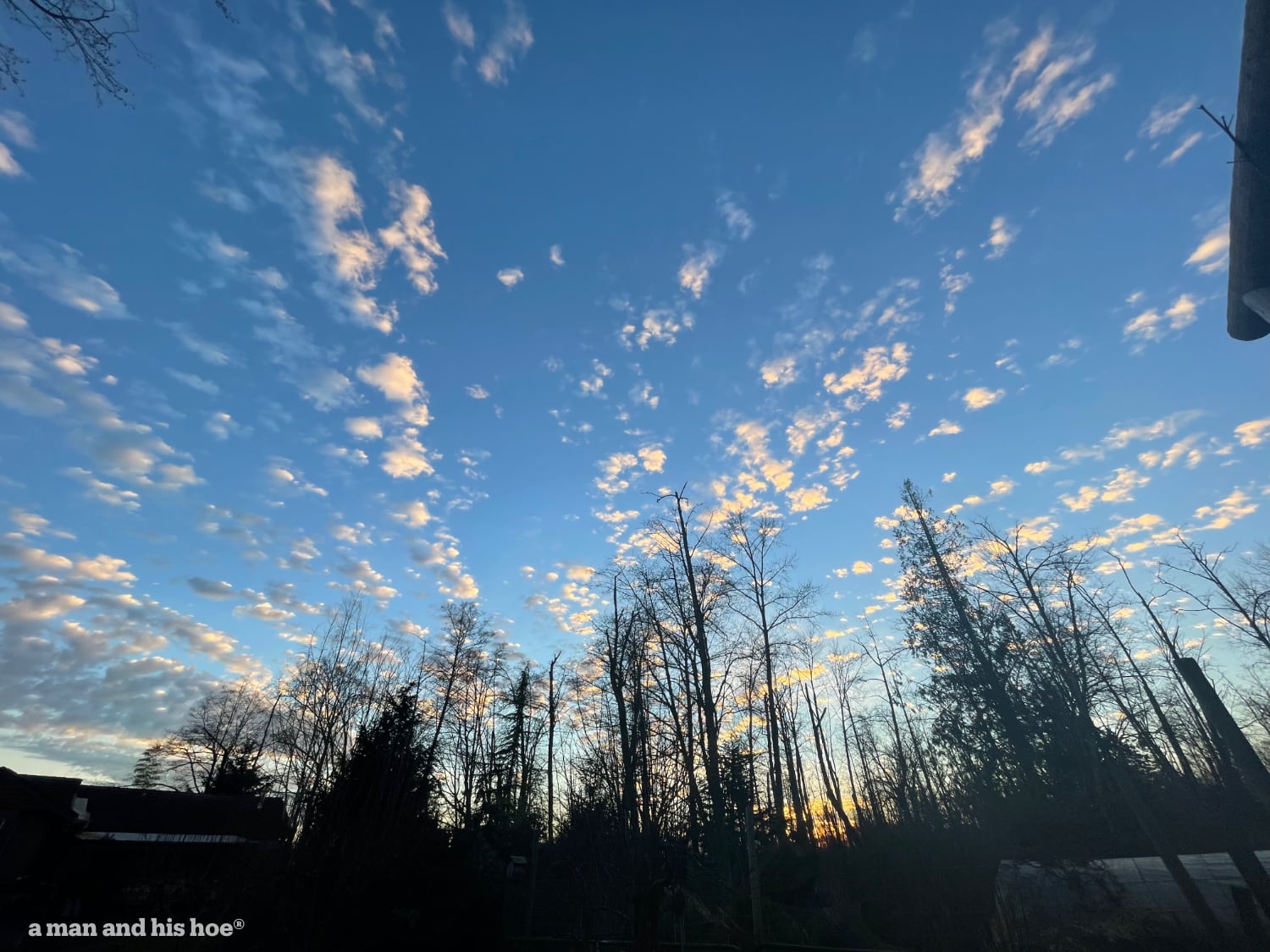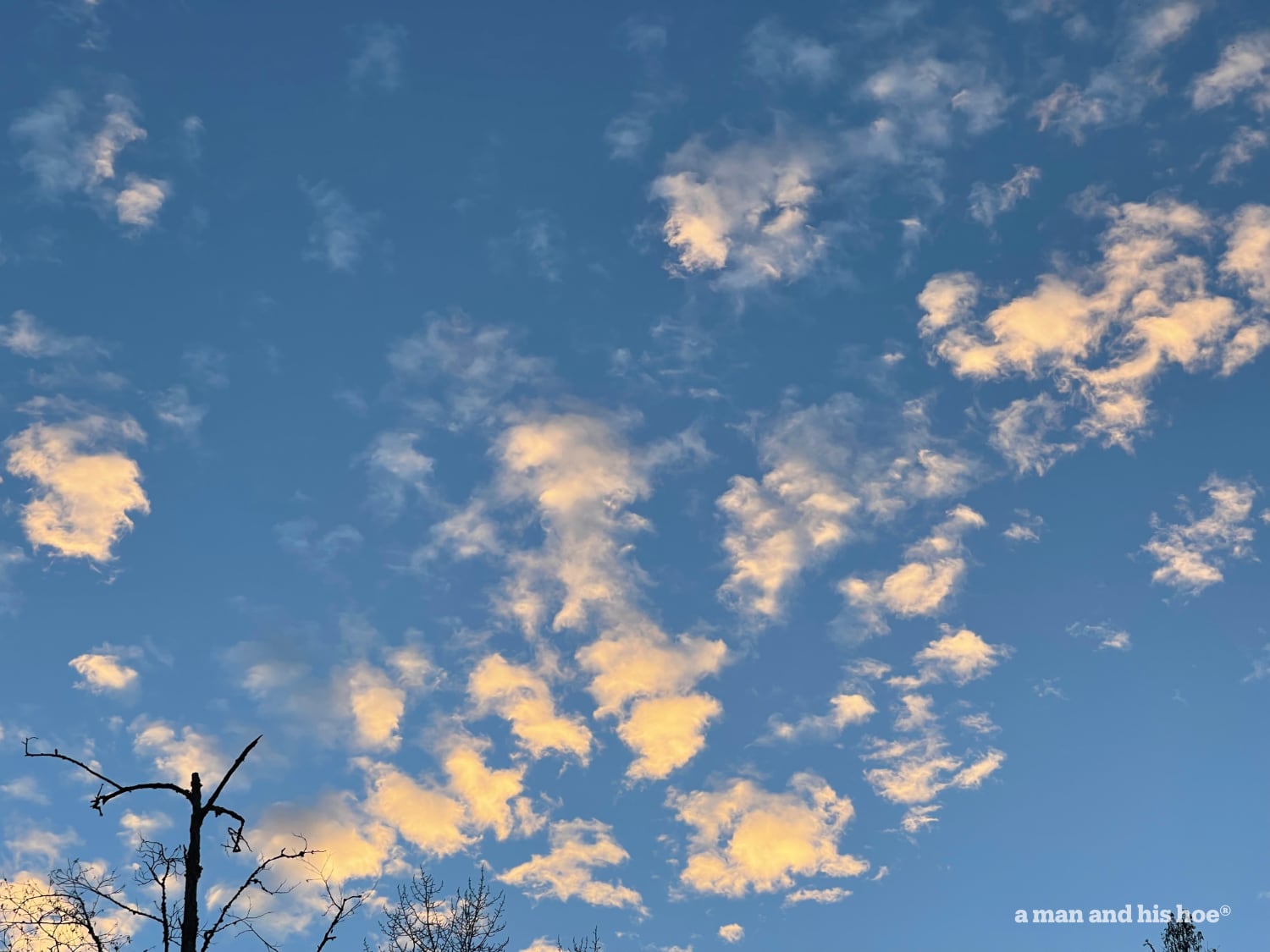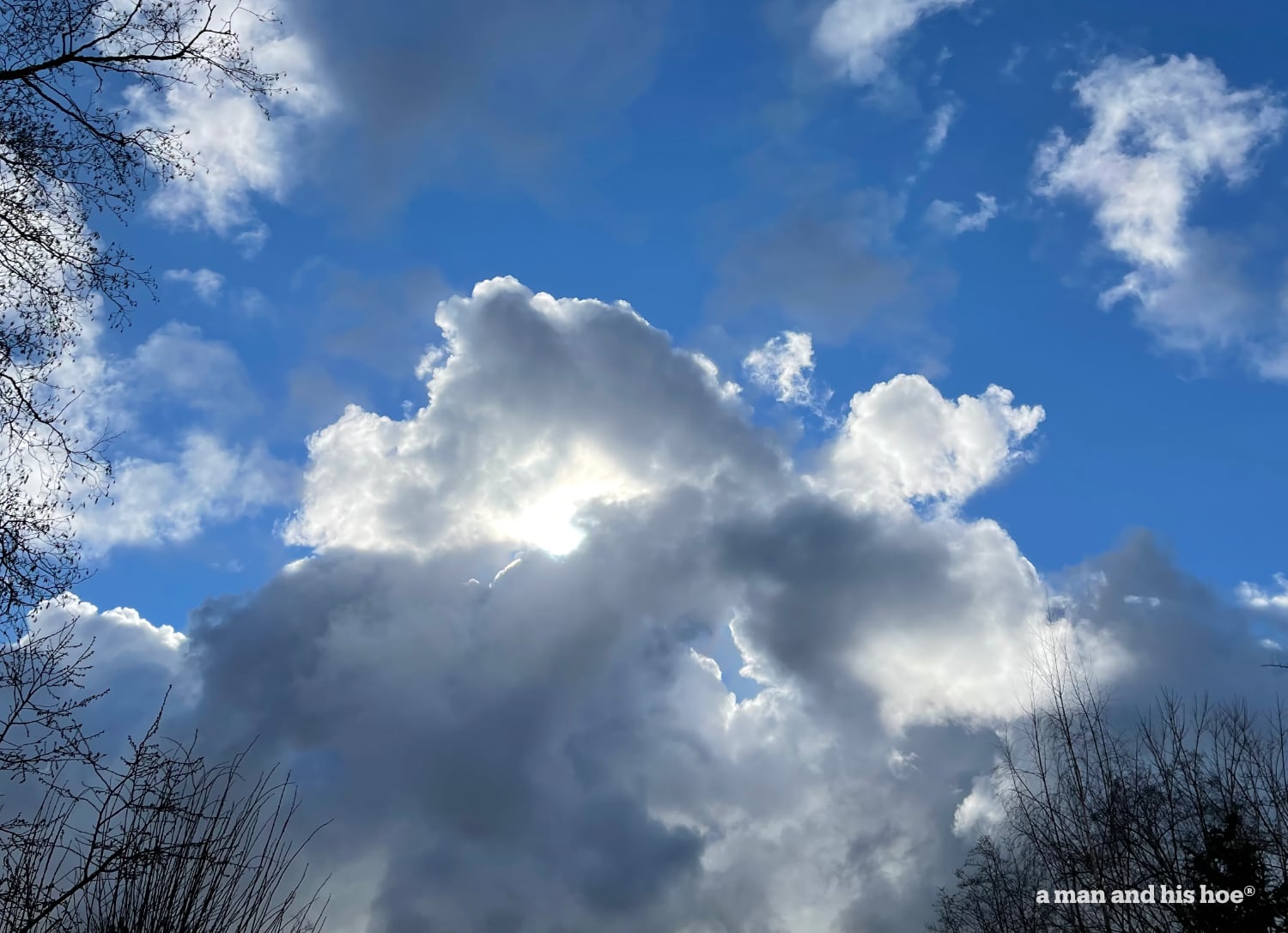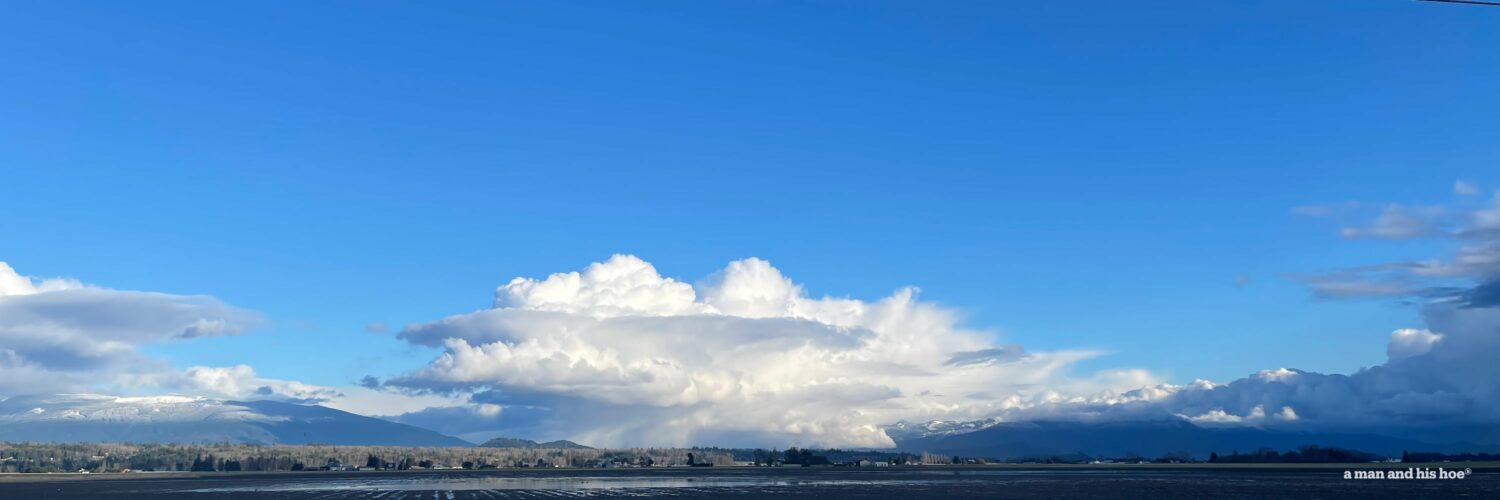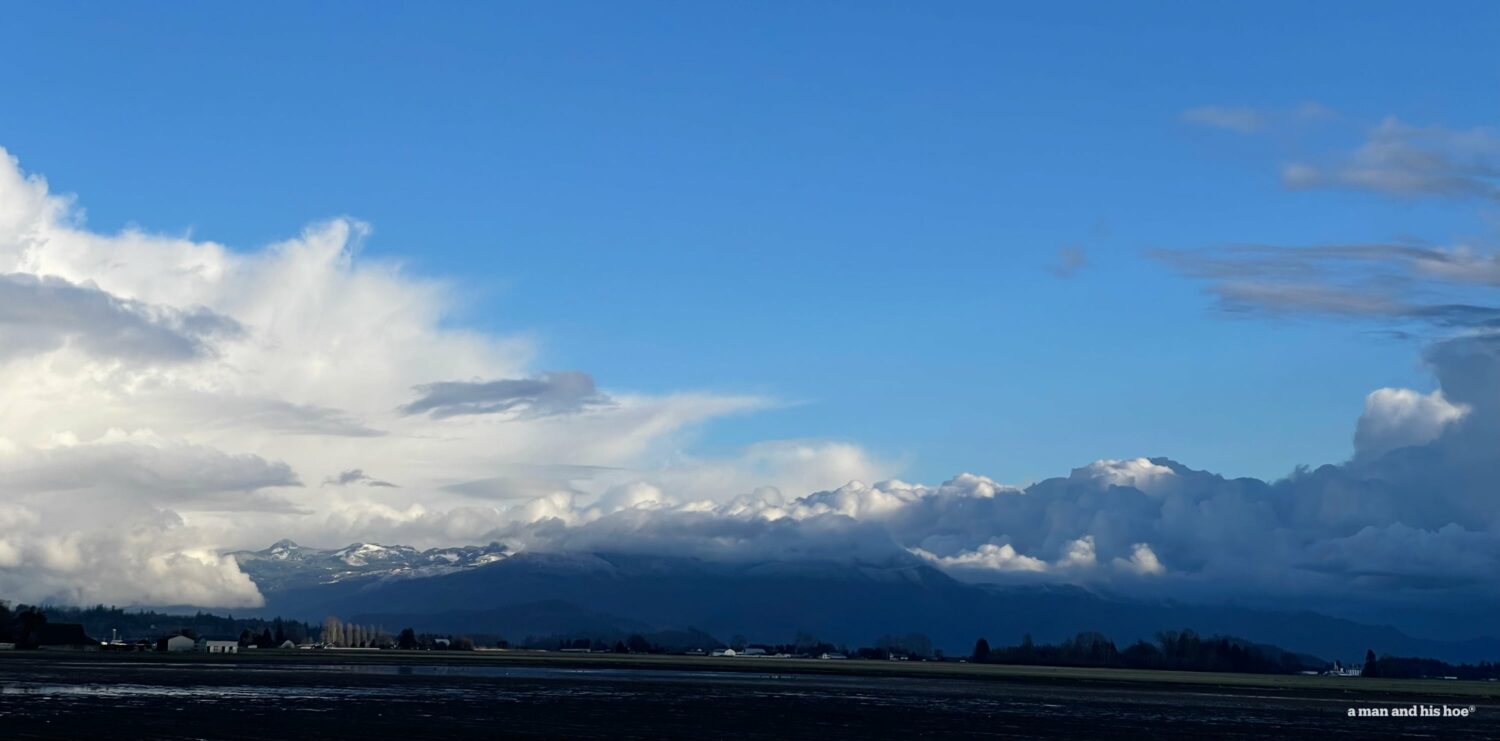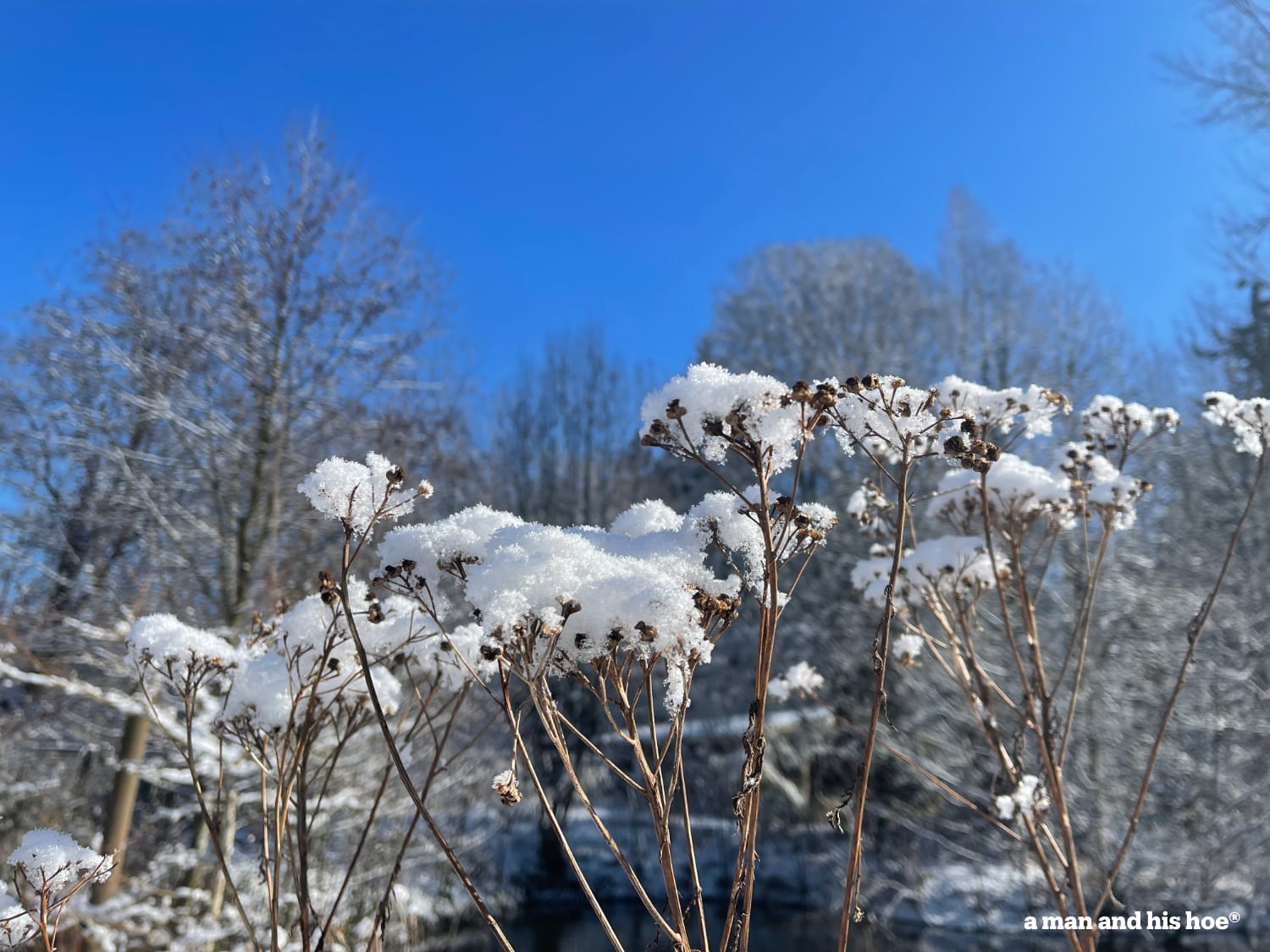
Wednesday night into Thursday morning, a snow so light fell that if it had been any lighter it would not have drifted to the ground. It would have floated in the air and blown away.
Thursday morning, the clouds that brought the snow vanished. The bluest of blues filled the skies.
In the fall I don’t cut down the dried flower heads. I leave them just so they can collect the finest of snows on days like these. The flower heads are mostly air with thin, fragile branches holding up dried flower buds. But somehow the finest of snows manages to build bridges between these thin branches and form billowy nests. Snow so fine should just slip between the thin branches and flutter to the ground.
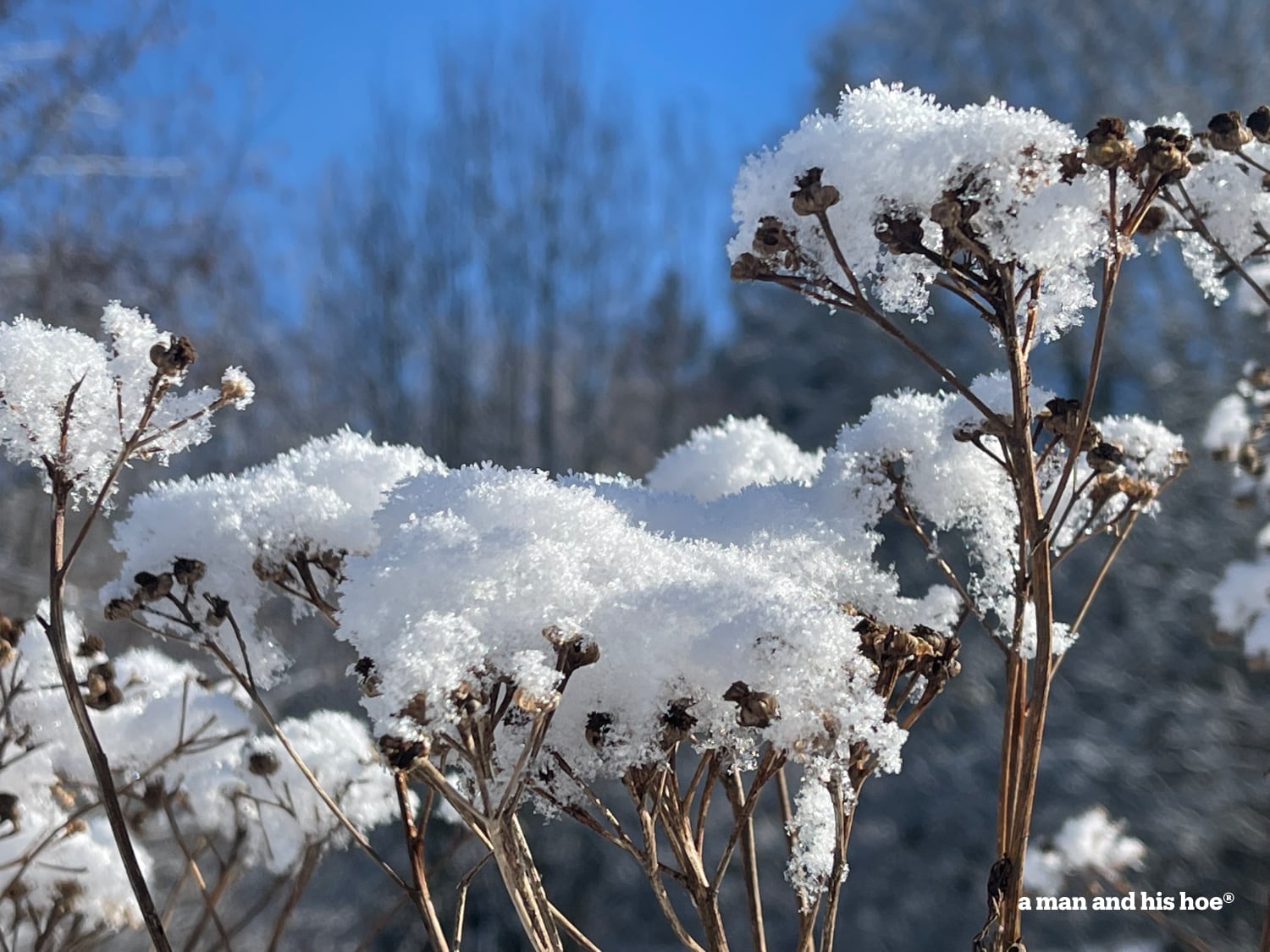
See how far apart the individual flower buds are? They are further apart than the flakes are big. Yet a few flakes cling to the buds, more flakes cling to the edges of those flakes, and being so light they hang on, until enough flakes cling to their edges and to the new edges, and snowflake bridges span from bud to bud.

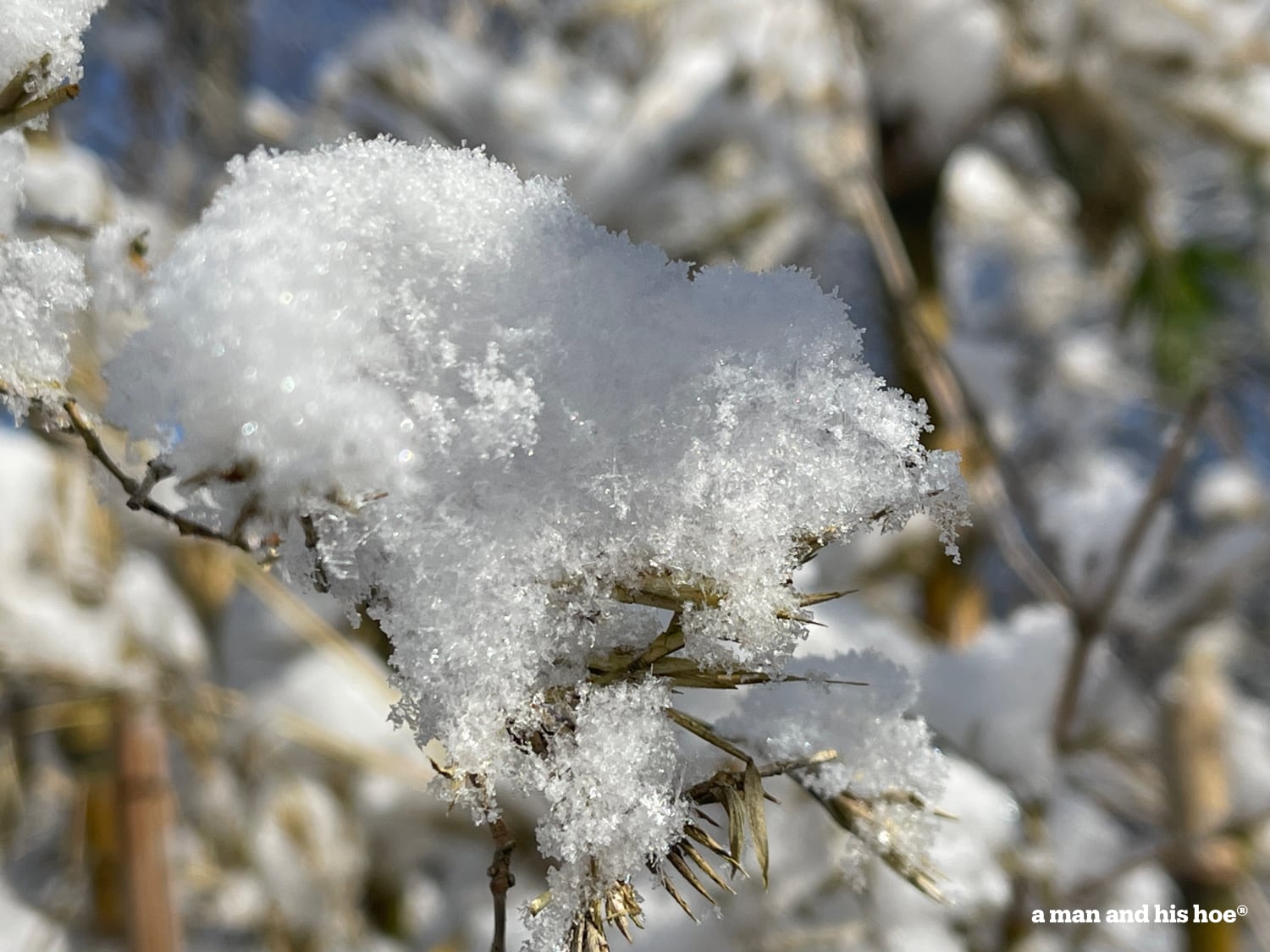
The snow is so light, that it’s conceivable it could lift the branches it falls on. Luckily for us, snow melts into water. If it melted into a clingy gas, it could conceivably pull the plants out of the ground and carry them high into the sky. If that were the case, we’d be out smacking the snow off plants to keep them from flying away when the snow changed to clingy gas and carried them over the mountains.
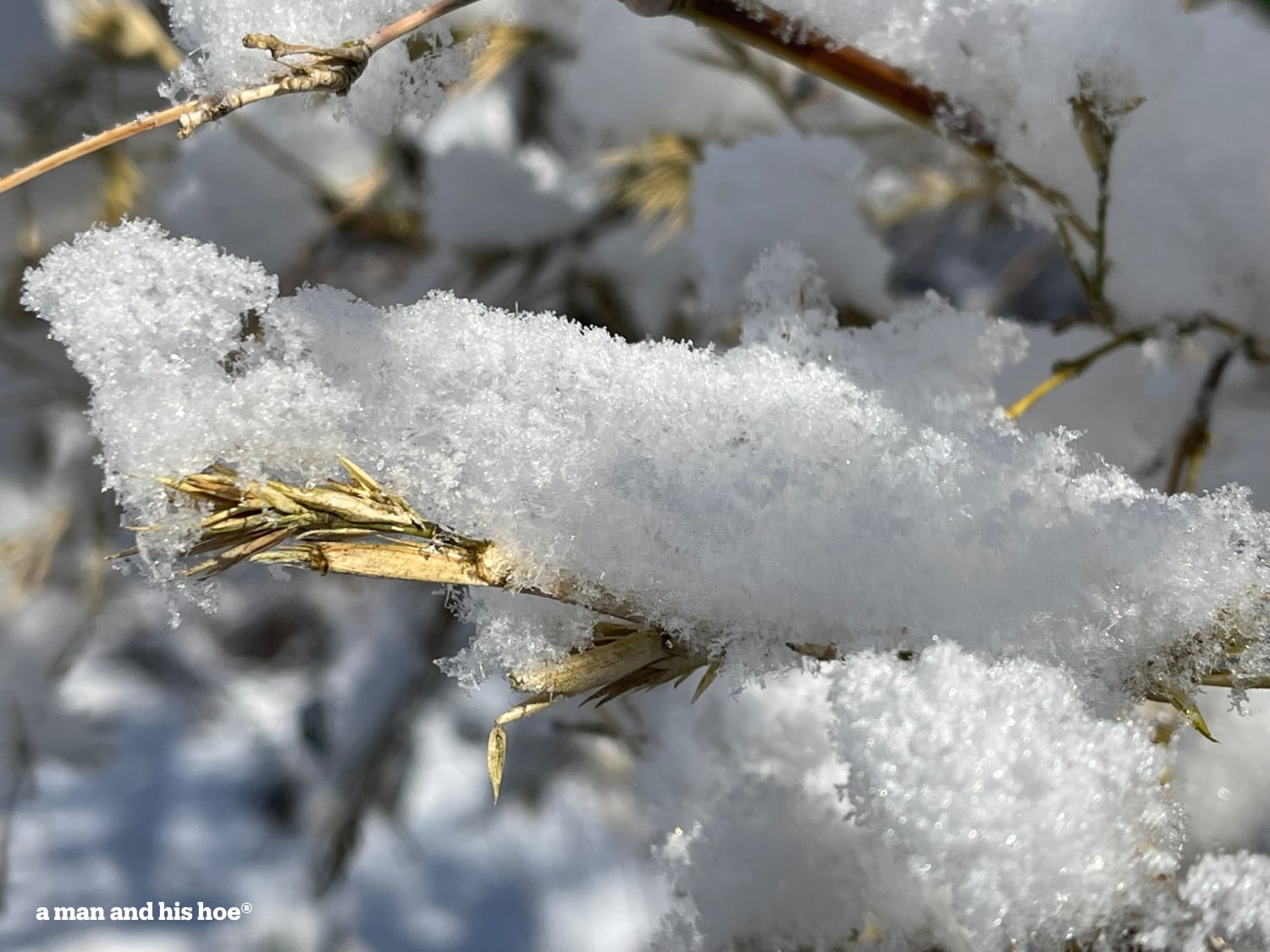
Today’s rain and warm weather melted all the snow. Thursday’s snow is but a memory. The plants and trees did not float away with the snow.
Was this the last snow of the season? It’s almost March. With each day, the chance of another snow diminishes.
